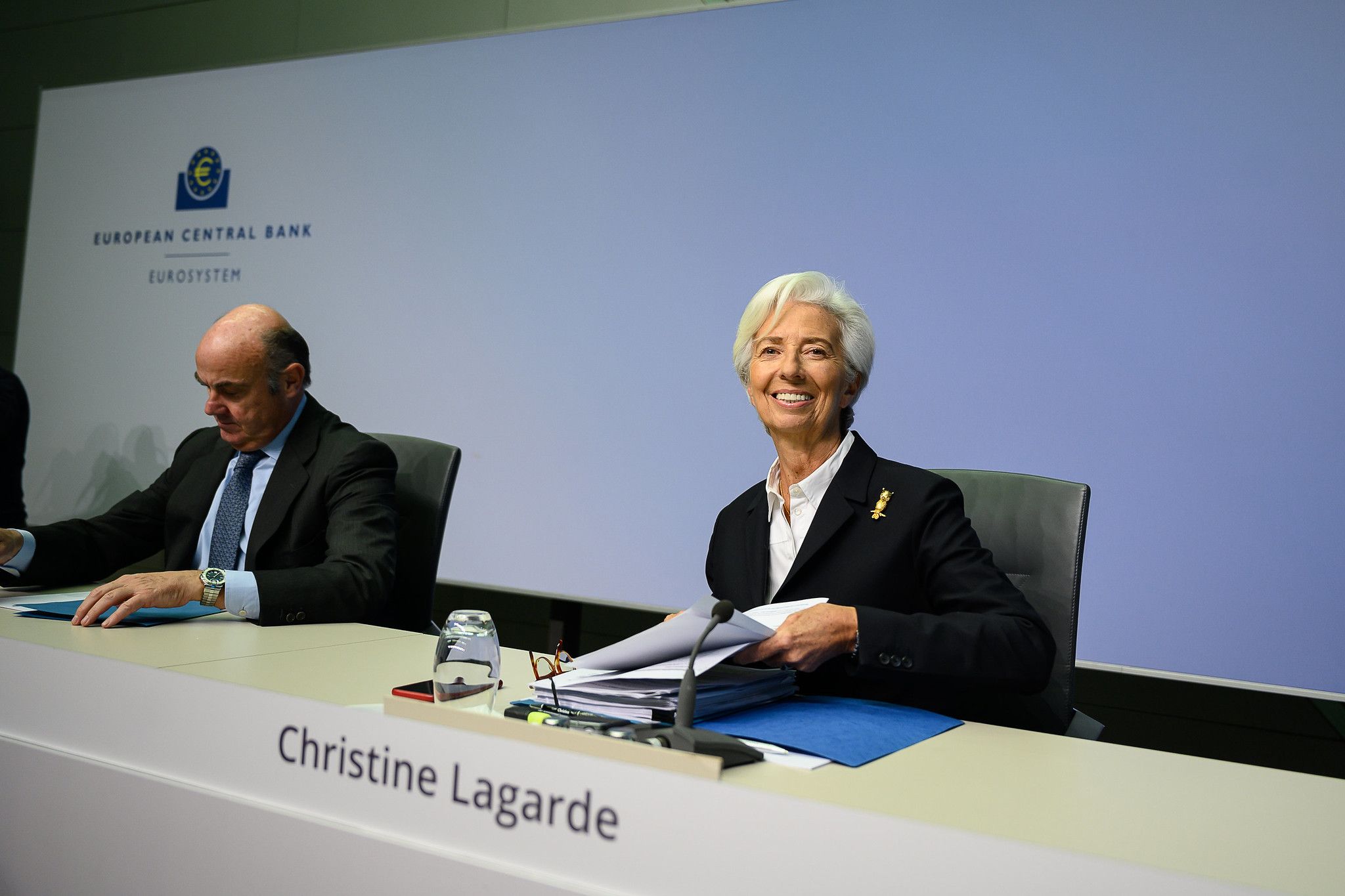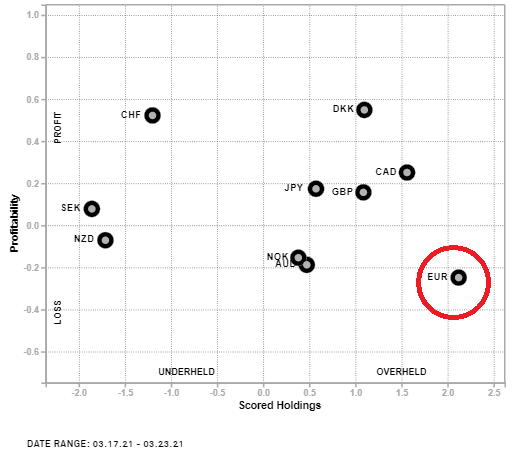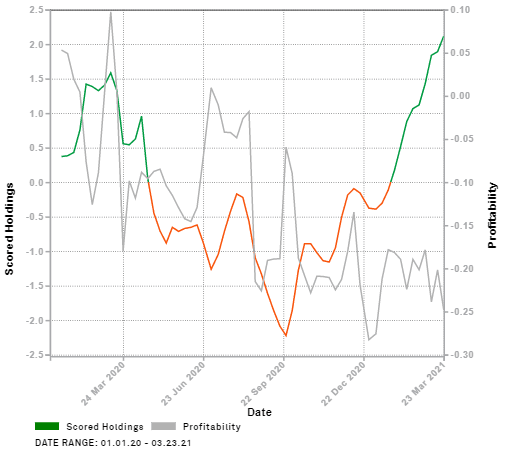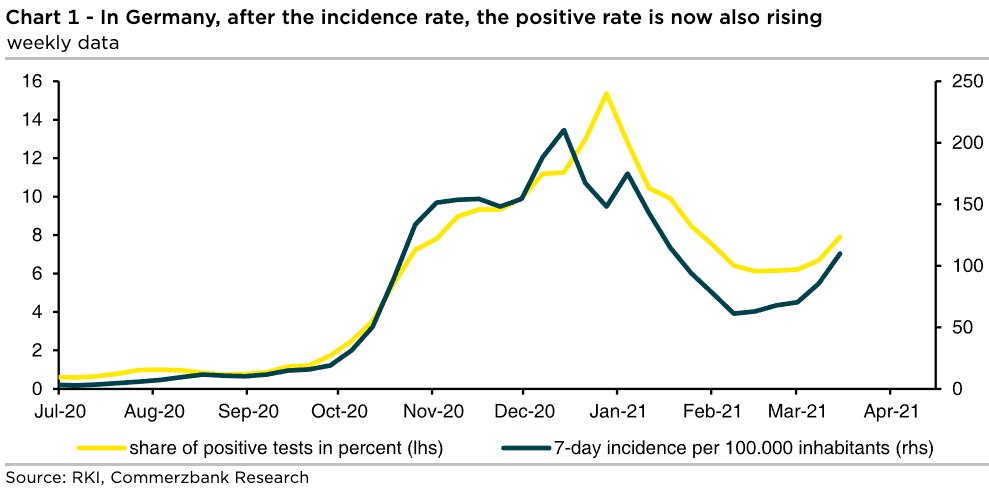Euro Holdings "Extreme" says BNY Mellon, Puts Euro-Dollar Rate at Risk of Further Decline
- Investors too optimistic on EUR
- EU services sector at risk of permanent scarring
- ECB likely to see EUR/USD @ 1.21 as "absolute limit"

Above: File image of ECB President Lagarde. Image © European Central Bank
- EUR/USD spot at publication: 1.1811
- Bank transfer rates (indicative guide): 1.1390-1.1480
- Money transfer specialist rates (indicative): 1.1730
- More information on bank-beating rates, here
- Set a rate alert, here
Euro exchange rates could be teetering on the brink of a more notable shift lower as a growing new wave of covid-19 infections grip Eurozone countries, leaving the region's services sector at risk of permanent scarring.
The rise in covid infections will likely require governments to implement further restrictions that could hit sentiment and activity in the region, requiring further interventions from the European Central Bank (ECB) which traditionally lead to declines in the value of the region's single currency.
And all this comes at a time when investors stubbornly hold onto Euros in the expectation that it will rise.
According to analysis by investment bank BNY Mellon, sentiment on the Euro is now considered extreme as investors are still sitting on an oversized bet for Euro upside despite developments in the economy.
The foreign exchange playbook suggests when sentiment and positioning reach extreme levels there is a heightened risk that a capitulation ensues and this leads to a sizeable corrective move lower.
"As the charts below from iFlow show, EUR is now the most overheld currency in G10 and with a score of over 2.0: we would even characterize EUR holdings now as extreme," says Geoff Yu, Senior EMEA Market Strategist at BNY Mellon.
Image courtesy of BNY Mellon
iFlow is BNY Mellon's custom flows observation tool that gives analysts insights into where investors are sending money and gives insights into how various sectors and financial assets might perform in the future as a result of these flows.
The Euro has already come under some pressure of late, with the Euro-to-Dollar exchange rate (EUR/USD) falling back below 1.20 in March to quote at 1.1800 at the time of publication.
But there is now a risk that this move lower accelerates as deteriorating sentiment towards the Eurozone meets a potentially over-held Euro.
Referencing the investor community's holdings of Euros, Yu says "these positions are not profitable and need little encouragement to be taken off."
Image courtesy of BNY Mellon
Covid-19 infections in the Eurozone remain a concern to authorities with Germany - the region's economic engine - looking particularly sensitive to the virus.
"In Germany, all indicators now point to a significantly stronger spread of the coronavirus. In the past week, the proportion of positive tests has also increased significantly," says Bernd Weidensteiner, Senior Economist at Commerzbank.
Weidensteiner explains that the 7-day incidence published daily by the German RKI - i.e. the total number of people who have contracted Corona in the past seven days - plays a major role in politics. Whether shops open or close depends on this value, according to the decision of 3 March.
Yesterday it stood at 113.3 per 100,000 inhabitants, up 5.2 from Tuesday.
Yet Chancellor Angela Merkel on Wednesday performed a seismic u-turn by reversing a decision to tighten restrictions over Easter. The decision could lead to the requirement for a more severe and longer-lasting lockdown in the future if cases start to runaway which in turn poses significant risks for the economy.
In France, the number of infections continues to rise and in the past seven days almost 50 new infections per 100,000 were reported, 11 more than a week ago.
The country has already announced new restrictions on movement.
"Despite the litany of negative headlines of late, especially on vaccinations and lockdowns, the euro has managed to hold its ground. If the FX market chooses to move away from following the whims of US yields in the coming weeks and allow idiosyncratic factors to drive price action, the euro certainly is outperforming its fundamentals," says Yu.
Yu says the impact of further lockdowns, or lengthened lockdowns, could be felt most harshly in the services sector which could now find itself at risk of more permanent scarring i.e. more sub-sectors and businesses will be unable to recover and be remembered as permanent casualties of the crisis.
This diminishes the scope for a subsequent post-covid rebound.
{wbamp-hide start} {wbamp-hide end}{wbamp-show start}{wbamp-show end}
BNY Mellon warn clients that the ECB will be watching the developments and will most likely have to respond my rewriting their forecasts for the region's economy and adjust policy measures accordingly.
They say there is a particular risk that the ECB's forecasts for inflation prove too optimistic and that revisions lower are made.
This in turn will prompt the ECB to look at the exchange rate and Yu says they will be increasingly uncomfortable with any further gains.
"Based on pure mathematics the ECB’s EUR/USD anchoring assumptions of 1.21 throughout the forecast horizon will serve as an absolute cap in exchange rate tolerance," says Yu.
"Any sustained move higher without any shift higher in demand prospects, let alone scarring, would almost certainly risk lower inflation due to pass-through effects," he adds.
BNY Mellon's analysis of extreme positioning in the Euro suggest to them that now could be the right time for the ECB to put in place actions any actions that would help put downside pressure on the currency, a view that should prompt some caution amongst bulls.








